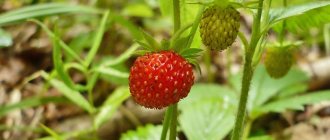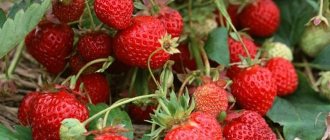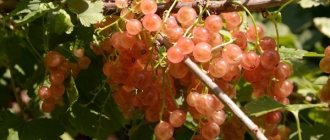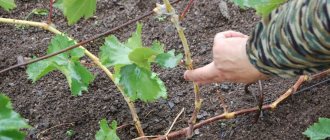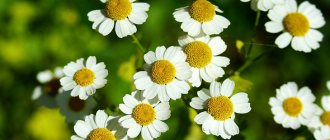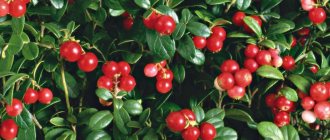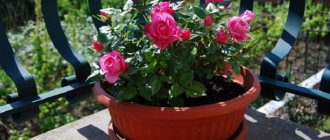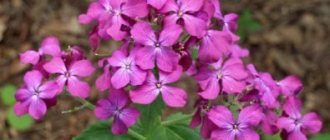Gardeners know that strawberries (garden strawberries) belong to the Rosaceae family - hence their colorful blooms. It is primarily grown for its juicy berries, but decorative varieties, including rose-colored ones, have existed for a long time.
Garden strawberries (colloquially strawberries) are one of the most beloved and widespread crops in the world. Its bright fruits, rich in vitamin C and folic acid, are tasty and healthy, and are also among the first to ripen in our latitudes.
- 15 Incredible Facts You Don't Know About Strawberries
Where can you taste strawberries for a million dollars, and why every fashionista should grow this berry in her dacha. All the answers are in our article.
Everyone is familiar with the picture of strawberry beds with dark green bushes, which in early spring are strewn with small white flowers - harbingers of a quick and bountiful harvest. How do you look at continuously flowering and fruiting strawberries in flowerpots or pots? Moreover, blooming not with ordinary white, but with soft pink or bright ruby large flowers? Don't believe there is such a thing? We will prove and show you.
In addition to incredible decorativeness, such varieties and hybrids of strawberries (garden strawberries) in the overwhelming majority are distinguished by increased vitality, high productivity, independence from daylight hours and early ripening - all this is genetically determined. At the same time, growing strawberries with unusual flowers is practically no different from the agricultural technology of ordinary varieties.
Meet strawberries blooming pink!
Strawberry Roman F1 (Roman F1)
| High-yielding hybrid. Forms a compact bush up to 30 cm high with a large number of inflorescences and tendrils. Flowers and fruits The peduncles are long, the flowers are large, pale pink. The berries are large (up to 5 cm), bright red, elongated teardrop-shaped, sweet, very aromatic. Ripening period Early remontant hybrid. Fruits in the greenhouse all year round. Features of cultivation Genetically inherent possibility of continuous flowering and fruiting, regardless of the length of daylight hours. Not picky. Suitable for both decorative (canopy) and garden growing. | ||
Pink-flowered garden strawberries: descriptions, photos
Mostly in the group of strawberries with unusual flowers are first-generation hybrids. The description indicates the marking F1, the characteristics of the culture are noted. Victoria is grown both for harvest and for decorative purposes.
Plants look bright and unusual in pots, in containers on loggias and balconies. Hybrid forms have been developed in which rosettes on the tendrils begin to bloom and bear fruit without rooting. At the height of the growing season, such bushes are strewn with flowers, ripening and ripe berries.
On a note! A feature of some varieties is simultaneous flowering and fruit formation.
Strawberry Tristan F1
| High-yielding hybrid. Forms compact bushes about 25 cm high and 30 cm wide with practically no mustache. Flowers and fruits The flowers are large, dark pink. The berries are medium-sized (2-4 cm in diameter), elongated, deep red, very sweet. Ripening period Early. Blooms and bears fruit profusely all summer. Features of cultivation Unpretentious, resistant to diseases and low temperatures. Suitable for both decorative indoor and garden cultivation. | ||
Methods of application
Strawberries with pink flowers are not as rare as they might seem. These varieties are hybrid. There are varieties with small or large flowers, more or less bright. In addition, they have a rich, pleasant aroma.
You can use these strawberries in various ways:
- most varieties give a good, abundant harvest;
- beds covered with pink flowers decorate the garden;
- you can neglect the yield and plant the bushes in a flowerbed;
- among the pink-flowered varieties there are ampelous ones, suitable for hanging cultivation and designing air gardens and compact plantings on balconies and verandas;
- low and creeping bushes are able to create a solid, dense cover on the soil.
As you can see, the varieties belonging to this group not only bear fruit abundantly, but also successfully cope with the decorative task. They decorate the beds no worse than ordinary plants. The pink flowers catch the eye against the green background. And if you can also enjoy a berry from the flowerbed, then that’s great.
Interesting! Strawberries with pink flowers are an excellent honey plant. Due to the enhanced smell and increased size, pollinating insects love these varieties more than usual.
Strawberry Pink Panda
| Hybrid of garden strawberry and cinquefoil (Potentilla palustris). Forms low (up to 15 cm), but voluminous (about 60 cm) bushes with a large number of tendrils and flowers. Flowers and fruits: The flowers are pale pink, large. The berries ripen in small quantities, small (up to 1.5 cm in diameter), of average taste. Ripening period: The flowering period is long: from spring to autumn. The variety is early ripening. Features of cultivation: Undemanding to care, multiplies quickly. A wonderful honey plant. Drought resistant. Mainly used as an ornamental plant (both ground cover and hanging). |
Decorative types
This group includes garden strawberries, which stand out for their attractive appearance. Yield indicators fade into the background, although some hybrid forms have a lot of berries on the bushes during the season.
They are appropriate in the design of private houses, entrances to the site, balconies, loggias. Some summer residents grow such strawberries in ridges, flower beds, and with the onset of cold weather they transfer them in pots to their homes.
Varieties:
“ World Debut ” is a remontant with soft pink flowers. It bears fruit throughout the growing season, from June until the onset of cold weather. Refers to day-neutral strawberries. The bushes have long peduncles, and on them are pink flowers with a white tint. The berries are about 30-35 grams, sweet and fragrant. Use: desserts, freezing, preparations for the winter.
“ Pink Panda ” is considered by experienced gardeners to be one of the best varieties of garden strawberries in the decorative group. The “pink panda” hybrid is mustachioed and grows quickly, so the garden bed soon looks like a huge green-pink carpet. Flowering is long-lasting, from late spring to late autumn. There are not many berries, but they are quite suitable for eating, although not as tasty as other varieties. It is grown to decorate the site.
“ Pink flamingo ” - the remontant hybrid has few berries, but they are sweet and fragrant. Gardeners note the easy care of the plant, the possibility of planting in pots, containers, and baskets. This species belongs to the ampelous forms, often called curly. But in fact, such garden strawberries do not exist, and varieties with long, flowing peduncles are mistakenly called climbing strawberries. The peculiarity of the hybrid is the early formation of mustaches, the rosettes of which bear fruit without rooting. It is these shoots that create the impression of cascades of greenery, flowers, and berries. The fruits are burgundy-red, juicy, with a bright strawberry aroma.
Strawberry Pink Miracle (Pink Spiritus)
| High-yielding variety. Forms a strong bush up to 50 cm in height with a large number of inflorescences. Flowers and fruits The flowers are decorative, pale pink. The berries are pineapple-type, medium to large in size (up to 5 cm in diameter), red, sweet, aromatic. Ripening period An early ripening variety with a long fruiting period. It is characterized by simultaneous ripening of fruits. Features of cultivation This variety is frost-resistant and tolerant to many diseases. Suitable for growing in open ground and hanging baskets. Watering is moderate. | ||
Features of care
Strawberries will not delight you with beautiful inflorescences and abundant fruits if you do not care for them properly. By themselves, garden records for productivity are not set, and lush flowers do not bloom.
To make garden strawberries feel comfortable, you need to:
- These varieties grow better from seeds. The seeds are scattered over a container with damp soil (do not bury them) and covered. When a full pair of leaves has developed, the plants are picked and planted in a separate container, where they grow before being planted in the ground. You need to start preparing in February;
- when the first flower stalks appear on the bush, they need to be torn off, otherwise all the strength from the roots will go away and the plant will weaken;
- if you need a bountiful harvest from the bush, leave no more than 5 tendrils, and tear off the rest. The mustache of decorative strawberries is a necessary means of spreading in space;
- For the winter, even cold-resistant varieties are covered by pre-pruning and preserving the rosette. Strawberries in open ground are covered with spunbond, sawdust, and spruce paws. Potted forms are either dug into the ground and covered, or brought indoors, where it will continue to bloom;
- Do not overdo it with fertilizers, especially chemical ones. They can burn the bush, and in addition, they accumulate in the berries and enter the human body in this form.
Important! Strawberry seeds germinate better after hardening. They are frozen or sprinkled with snow when added to the ground.
Strawberries with unusual pink flowers are a real find. Such varieties immediately solve the problem of decorating the house and garden, and the harvest. You can even plant several types of pink-colored berries on your plot at the same time, creating a bright canvas. Beauty and benefits in one bottle – the best option!
5 / 5 ( 3 voices)
Strawberry Pink Flamingos
| Herbaceous high-yielding perennial. Forms medium- and low-growing spreading bushes with very long tendrils - “vines”. Flowers and fruits The flowers are large and pink. The berries are bright red, rich sweet and sour taste, dense, medium-sized (up to 2 cm in diameter). Ripening period Remontant. Fruits all year round. Features of cultivation Labor-intensive to grow, demanding on agricultural technology. Requires tying up flower stalks. Resistant to many diseases and high/low temperatures. Suitable for both decorative and garden growing. | ||
Strawberry Pink Dream F1
| High-yielding hybrid. Forms strong bushes up to 45 cm tall. Flowers and fruits The flowers are bright pink. The berries are conical, dark red, dense, sweet, medium to large in size (up to 5 cm in diameter). Ripening period Early maturing hybrid. It bears fruit in a greenhouse or apartment all year round. Features of cultivation Resistant to fusarium and gray rot. Cold resistant. | ||
Reviews
If you look at forums where people share their experiences of buying and growing blue strawberries from seeds, you can only find the following reviews:
Mira Koneva, Biysk
The blue berry looks very unrealistic, and there are no photographs of beds with such strawberries anywhere on the Internet.
Irina Mosina, Novorossiysk
White and yellow strawberry varieties do exist. There is also a very dark, bordering on black, berry from Indonesia. She has a unique taste. There are white, black and yellow raspberries.
Strawberry Fatty in Pink F1
| High-yielding hybrid. Forms a compact powerful bush up to 30 cm high. Flowers and fruits The flowers are light pink, large, growing in large numbers. The berries are large, conical, aromatic, sweet. Ripening period An early, remontant, consistently fruiting hybrid, in a greenhouse it produces crops all year round. Features of cultivation Highly decorative. Resistant to major diseases. Suitable for both decorative and garden growing. | ||
Diseases and pests
Any variety of strawberry - garden or ampelous - is subject to attacks by the same pests, microbes, viruses, and fungi. Thanks to growing at altitude, ampel strawberries get sick less often. Table 2 shows common diseases and pests of hanging varieties, and measures to combat them.
table 2
| Pests/diseases | Harm/symptoms | How to fight? |
| Powdery mildew | The edges of the leaves curl, the berries become covered with an ashy coating. | Cleaning up dried and damaged leaves. In the spring, they are sprayed with Bordeaux mixture 3, and after harvesting, the plantings are treated with a 1% solution. For prevention, plantings are sprayed in the spring with a solution of sulfaride (per 10 liters - 2 tablespoons). |
| Strawberry mite | The fruits of the affected bushes are deformed, the leaves are weakened. | In spring - preventive spraying with Nero, Aktelik, Fufanon. Plantings are also sprayed with one of these preparations after harvesting and before cold weather. If a tick infestation has already occurred, spraying is carried out every 3 weeks. Mandatory - before flowering and before the formation of ovaries. |
| Nematodes | Transparent microscopic worms up to 1 m long. They suck juices from leaves and stems. The foliage wrinkles, the stems shorten, the berries harden. | The affected bushes are watered with a bleach solution, then they are pulled out and burned. The remaining bushes are sprayed with a solution of phosphamide or mercaptophos - 2-3 times with an interval of 4-5 days. |
| Strawberry weevil | Holes appear in the leaves and larvae appear in the buds. | The plantings are sprayed with Decis, Iskra, and Karbofos. |
| Gray rot | A fungal disease that develops at high humidity. Light brown fluffy spots appear. The disease can destroy 90% of the crop. | For prevention, plants are sprayed with Bordeaux mixture 3%. After harvesting the berries, use azotene (20 g per 10 liters of water). |
| Late blight | Withering and drying of leaves. Dying of roots. | After harvesting diseased bushes, disinfect the soil. Treatment with copper preparations - oxychloride or Bordeaux mixture. When signs of disease appear, spray with Ridomil, Horus or other fungicides. |
Strawberry Tuscany F1 (Toscana F1)
| High-yielding hybrid. Forms compact powerful bushes about 30 cm high and wide with numerous tendrils. Flowers and fruits The flowers are large, ruby-colored, very decorative. The berries are large (up to 6 cm in diameter), conical, red, sweet, very aromatic. Ripening period Remontant variety. Bears fruit consistently until frost. Features of cultivation Frost and heat resistant. Resistant to diseases. Suitable for both decorative hanging and garden growing. | ||
General information
How did you get the blue berry?
All sources provide information about the genetic modification that was used in the development of a new berry variety. In this case, they talk about the Arctic flounder gene.
Genetic engineering has its own goals:
- Improve the taste and quality of products;
- Instilling the properties of one product into another;
- Breeding new varieties of various crops;
- Plant resistance to weather.
If he talks about the flounder gene, it is doubtful that it could lead to strawberries turning blue, but it could well lead to frost resistance.
What will summer residents say?
Products from China are now quite popular; every third person can use websites with their products. They order everything there at very low prices, including seeds of various plants.
There is a review from a summer resident who is not against experimenting with plants. She bought strawberry seeds of different colors. Blue strawberry seeds arrived first, they have already been planted according to all the rules, all that remains is to wait for the harvest.
A participant in one of the gardening forums is interested in the result, but calls for people not to eat what grows in the garden.
There are people who do not want to spend any money for the sake of interest, but will be happy to watch the results of other summer residents.
Many reviews say that people bought seeds, sowed them in their dachas, and even the seedlings were noticeable. This is where the stories end, because there is not a single answer that a blue strawberry has grown.
Miracle of blue
There are flowers, vegetables, fruits that are characterized by blue or light blue color. There are plants that have never been seen in this color before. However, the blue rose and purple carnation already exist, but the process of obtaining them is described in scientific works, the authors of the method are identified, everything is documented.
Another question with strawberries, you don’t need to rely on chance, and it’s worth thinking about, because:
Information about blue strawberries can only be found from seed traders, without any documents or confirmation from breeders.
- Without documentation, taking the seller’s word about the safety of eating blue strawberries is dangerous.
- Photos on the Internet with blue strawberries are only on the table or in the hands, but not in the garden, especially since there is no video about the process of agricultural technology;
Important! There is a lot of controversy about GMOs, but if you come across a blue strawberry on your way, you should think twice before trying it.
Is there a blue strawberry?
Returning to the sale of seeds and reviews from gardeners, it is worth noting that when you enter a search query, all links lead to Aliexpress or to the intermediaries of this site. Reviews on the trading platform are full of questions about whether this is a strawberry? Those who bought the seeds post a video of unpacking and maximum planting, without continuing.
If you look closely at the photos online, there are many varieties of blue strawberries. It differs in shape and shade, blue saturation. There is a blue surface with chrome plating. In some photographs, seeds are visible on the surface, and some of them are completely the same shade, as if there were no seeds at all.
On the Internet you can find photographs of blue strawberries cut open or with a bitten part. In this case, too, everything leads to disagreement, because the pulp, it turns out, can be both blue and red.
When collecting information from summer residents, seeing photographs, you just have to think about how many varieties of blue strawberries there are, or whether it all depends on the capabilities of the photo editor.
Strawberry Gasana F1
| High-yielding hybrid. Forms bushes with long trailing peduncles. Flowers and fruits The flowers are large, deep pink. The berries are juicy, medium-sized (3-4 cm in diameter), sweet, with an intense aroma. Ripening period A remontant hybrid that stably bears fruit until frost. Features of cultivation Unpretentious, winter-hardy. Suitable for both decorative hanging and garden growing. | ||

